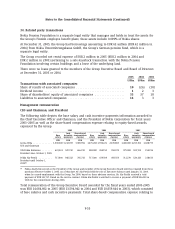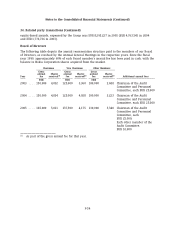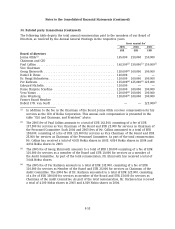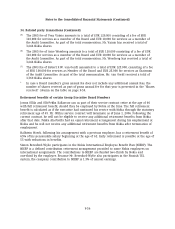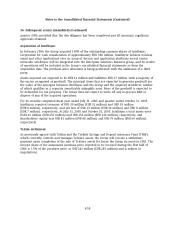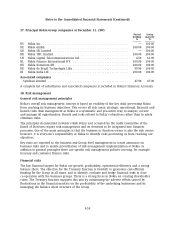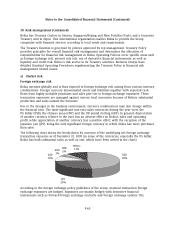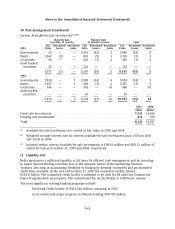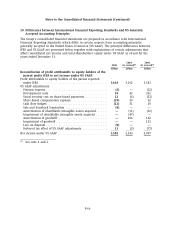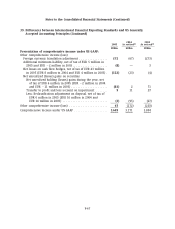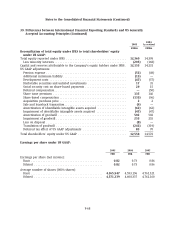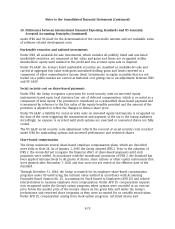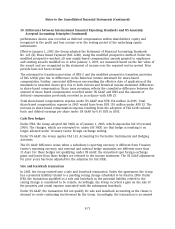Nokia 2005 Annual Report Download - page 199
Download and view the complete annual report
Please find page 199 of the 2005 Nokia annual report below. You can navigate through the pages in the report by either clicking on the pages listed below, or by using the keyword search tool below to find specific information within the annual report.Notes to the Consolidated Financial Statements (Continued)
38. Risk management (Continued)
majority of financial instruments hedging foreign exchange risk have a duration of less than a
year. The Group does not hedge forecasted foreign currency cash flows beyond two years.
Nokia uses the Value-at-Risk (‘‘VaR’’) methodology to assess the foreign exchange risk related to
the Treasury management of the Group exposures. The VaR figure represents the potential fair
value losses for a portfolio resulting from adverse changes in market factors using a specified time
period and confidence level based on historical data. To correctly take into account the non-linear
price function of certain derivative instruments, Nokia uses Monte Carlo simulation. Volatilities and
correlations are calculated from a one-year set of daily data.
Since Nokia has subsidiaries outside the Euro zone, the euro-denominated value of the
shareholders’ equity of Nokia is also exposed to fluctuations in exchange rates. Equity changes
caused by movements in foreign exchange rates are shown as a translation difference in the
Group consolidation. Nokia uses, from time to time, foreign exchange contracts and foreign
currency denominated loans to hedge its equity exposure arising from foreign net investments.
Interest rate risk
The Group is exposed to interest rate risk either through market value fluctuations of balance
sheet items (i.e. price risk) or through changes in interest income or expenses (i.e. re-investment
risk). Interest rate risk mainly arises through interest-bearing liabilities and assets. Estimated
future changes in cash flows and balance sheet structure also expose the Group to interest
rate risk.
Treasury is responsible for monitoring and managing the interest rate exposure of the Group. Due
to the current balance sheet structure of Nokia, emphasis is placed on managing the interest rate
risk of investments.
Nokia uses the VaR methodology to assess and measure the interest rate risk in the investment
portfolio, which is benchmarked against a combination of three-month and one-to-three-year
investment horizon. The VaR figure represents the potential fair value losses for a portfolio
resulting from adverse changes in market factors using a specified time period and confidence
level based on historical data. For interest rate risk VaR, Nokia uses variance-covariance
methodology. Volatilities and correlations are calculated from a one-year set of daily data.
Equity price risk
Nokia has certain strategic minority investments in publicly traded companies. These investments
are classified as available-for-sale. The fair value of the equity investments at December 31, 2005
was EUR 8 million (EUR 7 million in 2004).
There are currently no outstanding derivative financial instruments designated as hedges of these
equity investments.
In addition to the listed equity holdings, Nokia invests in private equity through Nokia Venture
Funds. The fair value of these available-for-sale equity investments at December 31, 2005 was
USD 177 million (USD 142 million in 2004). Nokia is exposed to equity price risk on social security
costs relating to stock compensation plans. Nokia hedges this risk by entering into cash settled
equity swap and option contracts.
F-61




